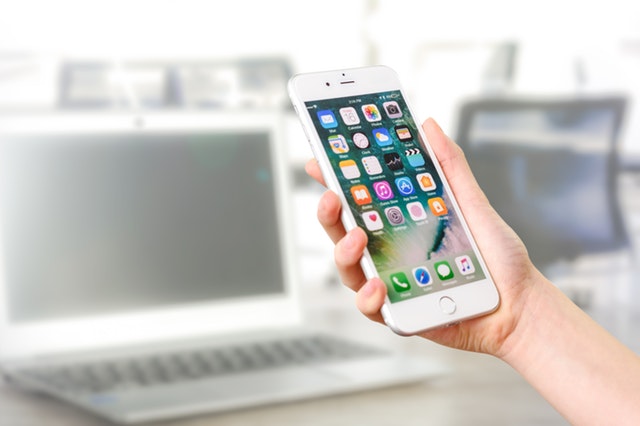 It had to come at some point. After years of rapid growth, IDC reported that, for the first time in the smartphone era, global shipments of new mobile phones went into decline in 2017, down 0.5% compared to the previous year.
It had to come at some point. After years of rapid growth, IDC reported that, for the first time in the smartphone era, global shipments of new mobile phones went into decline in 2017, down 0.5% compared to the previous year.
That confirmed the trend of overall smartphone sales slowing down in recent years. After rapid acceleration between 2010 and 2014, when the emerging smartphone market saw the number of devices sold more than quadruple, growth since 2015 has noticeably decelerated.
So what are the reasons behind this trend, and what does it mean for the mobile phone market? Here are some of the key reasons – and why it spells good news for used mobile vendors.
A natural cycle for a mature market
No product can keep accelerating its sales forever. In technology, classic theories of user adoption tell us that when a new device comes onto the market, if it is successful, there will be a rapid period of growth as people rush to get on board – exactly what we saw with the smartphone.
Eventually, this growth will plateau. After the initial rush of adoption, things start to slow down, simply because there are fewer and fewer new customers to reach. This is what in business speak is referred to as a mature market. Eventually, adoption will reach saturation point, where everyone who is likely to ever use the device now has one.
According to Ofcom, 94% of adults in the UK now own or use a mobile phone, and 76% use a smartphone. So the mobile phone market has certainly reached its effective saturation point, and while there is still room for smartphone penetration to increase, it will be the gently-paced growth of a mature market.
This, however, does not fully explain why sales of new handsets are on the decline. Manufacturers like Apple are very aware of the logarithms of new device adoption, which is why they never rest on the laurels. They are constantly introducing new, updated models, and incentivising customers to upgrade, so they can continually take advantage of the rapid growth in sales of early adoption.
The question then is – why are tactics such as these not having their desired effect?
One device for all things
An obvious explanation for why consumers are buying fewer new phones would be cost. Each new model manufacturers bring out to entice users to replace their old handset starts at a premium price. At a time when household budgets are being squeezed and consumers are increasingly cost conscious, many will see this as an unnecessary expenditure while they still have a perfectly acceptable device in good working order.
This line of argument doesn’t quite hold up for two reasons. One, vendors and retailers put a lot of effort into incentivising device upgrades so they don’t hit consumers too hard in the pocket – such as offering a new phone at a discounted price for renewing a contract, for example. Second, new devices are widely sold on payment plans. Spreading out the costs of a new upgrade over many months is much more palatable to people than paying a lump sum up front.
An alternative explanation is related to the fact that, with each successive upgrade, smartphones just get better and better, with more features, more juice to process everything faster – and greater reliability.
Back before smartphones arrived on the scene, mobile phones had reached a point of becoming almost throw away items. Cheap pay-as-you-go handsets could literally be bought off the shelf in your local shop for a few pounds. They might not offer the best performance, but users could afford to have two, three, four or more at a time – maybe one on contract for data or free calls, one with a cheap SMS SIM for texting, one for calling family overseas etc.
Now people predominantly use their smartphone as a personal computing device, for internet access, social media, entertainment etc. Just as you are more likely to invest in one really good laptop, carefully choosing the features to meet your needs, people are now treating smartphones as high-end investments at the same level.
This shift – having one device to meet all your needs – means the days of high volume, low unit price, quick turnover in the mobile market are over.
Driving second-hand trade
There is one final consequence of this shift in emphasis towards higher-value, longer-term investments in better quality smartphones which further explains why sales of new phones are dipping.
Wired gives the useful analogy that the smartphone market now operates like the automobile market. On the face of it, people choose their car carefully with a view to making a long-term investment. But there will always be those who cannot resist the lure of shiny new toys, and every couple of years (or less) are tempted to trade in their perfectly good car for a new model.
What happens to their old-not-old car, which still has a good 100,000 miles worth of life in it? It ends up in the second-hand market. For every driver who always wants to be behind the wheel of the very latest model, there is another who puts costs first, and opts for the value of a second-hand car.
The same thing applies to the smartphone market. With every new release Apple, Samsung, HTC, Huawei, LG and the rest make, there will be a flood of enthusiasts racing for the latest model. The devices they replace – more often than not in perfectly good working order, and only a year or two ‘out of date’ – will be reconditioned and recycled on the second hand market, where many a price-savvy consumer will be happy to snap up a high-spec phone at a bargain price.
As much as any other factor, this growth in the availability of top quality second-hand devices – driven by the constant churn of new models intended to keep people buying – explains why sales of new mobile phones are stalling. For many people, a new phone is now simply an unnecessary luxury.


